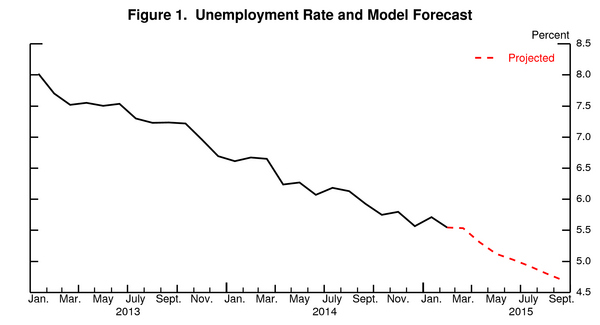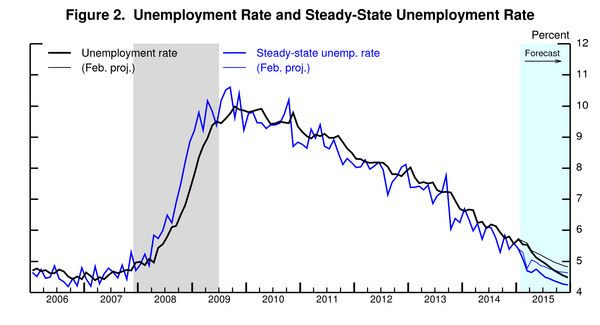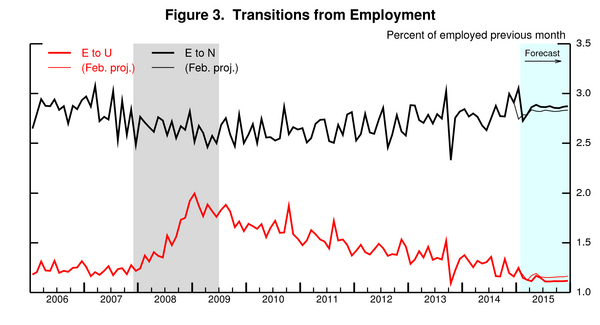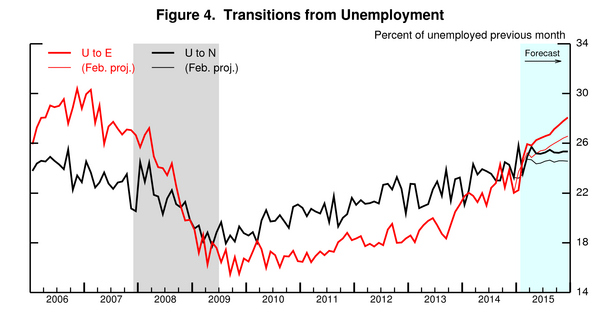This post discusses my monthly update of the Barnichon-Nekarda model. For an introduction to the basic concepts used in this post, read my introductory post (Full details are available here.)
In February, the unemployment rate declined 20 basis points to 5.5%, whereas the model anticipated no change. Going forward, the contour of the forecast is broadly unchanged with a faster decline in unemployment over the next 6 months. I anticipate the unemployment rate to remain steady in March and to reach 4.7% by September 2015.

This model’s forecast can be easily understood by looking at the projected behavior of the “steady-state” unemployment rate. The steady-state unemployment rate, the rate of unemployment implied by the underlying labor force flows—the blue line in figure 2— stands currently at 5.2%, 0.3% lower than the actual unemployment rate. Our research shows that the actual unemployment rate converges toward this steady state. With a steady-state unemployment rate substantially lower than the actual rate, this “steady-state convergence dynamic” will push the unemployment rate down, implying a decline in unemployment going forward. Moreover, with the strong anticipated growth in the job finding rate over the next few months (figure 4), the steady-state unemployment rate will decline fast, and this will push down the unemployment rate strongly over the next 6 months




To read more about the underlying model and the evidence that it outperforms other unemployment rate forecasts, see Barnichon and Nekarda (2012).



Commentary
Unemployment steady at 5.5% in March, to reach 4.7% by September
April 2, 2015